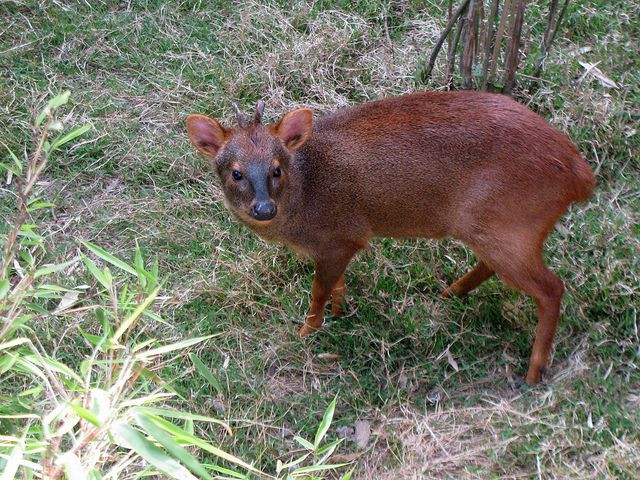
A Pudu deer was born at Queens Zoo in New York City this week, weighing in at a mere 1 pound. The little Pudu can weigh up to 20 pounds as an adult, the Wildlife Conservation Society said on the birth of the deer. The fawn is nursing and will soon be given a diet of eaves, grains, kale, carrots and hay. The Foundation said the Pudu deer has some "extraordinary characteristics," including barking at danger and being incredible sprinters. Here's five fun facts about this adorable creature:
1. It is the world's smallest deer
The Pudu deer is the smallest deer species in the world. It can grow between 13 and 17 inches high in its lifetime and usually weigh between 20 and 26 lbs, though the heaviest of the species tallied at 30 lbs. Males also have tiny, forked horns that only grow about 1.8 inches. The little creatures are perched on four slender legs to support their compact, stocky frame.
2. They are from Latin America
The pudu inhabits the temperate rainforests of South America, using the ample underbrush and bamboo to hide from predators. Its ability to sprint and jump also give it an advantage in the thickets of the jungle. Pudus are found in southern Chile, southwest Argentina, Chiloe Island, the Andes, Colombia, Ecuador and Peru roaming at 6,600 to 13,000 feet above sea level.
3. There's two species
The two species of pudu deer are known as the southern and northern pudu. The souther species is slightly larger than its relatives in the north, growing up to 18 inches high and weighing up to 30 lbs. The southern pudu's antlers tend to curve back, somewhat resembling a small mountain goat. They generally live in lower elevations, not typically found above 2,000 feet above sea level. The northern pudu also has smaller antlers, growing only about 2.4 inches long. The northen species has a lighter coat than the southern species, but darker facial features.
4. Social behavior is a mystery
The pudu are solitary and typically only meet once a year to mate. This makes analyzing their social behavior very difficult. The pudu are also very shy and will hide at the first sign of danger. The pudu are territorial, with each one having its own area in which it lives. Large facial glands emitting specific scents are how pudu in the area communicate with others that may be nearby. An angry pudu will typically quiver with its fur raised and bark when it is afraid.
5. They are classified as endangered
The pudu's habitat is in peril due to heavy deforestation. Overhunting is also a major factor in the depletion of its population. Conservationalists list the pudu as vulnerable to extinction. Their lands have been cleared for human development, cattle farming, agriculture and more. Roads are often constructed to support these industries, making the environment more dangerous to the deer as many are run over by motorists. The introduction of domestic animals, specifically domestic dogs, are also hurting the pudu's habitat. Dogs prey on the tiny creatures, and transfer diseases such as heartworms that the pudu are especially vulnerable to.
© 2025 Latin Times. All rights reserved. Do not reproduce without permission.




